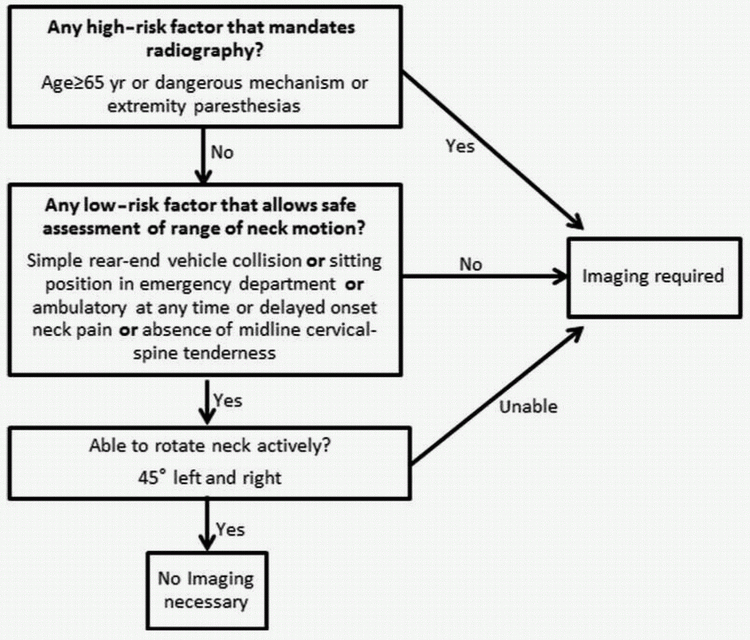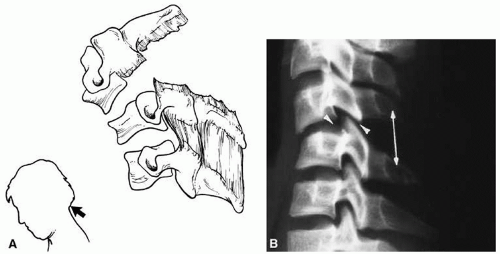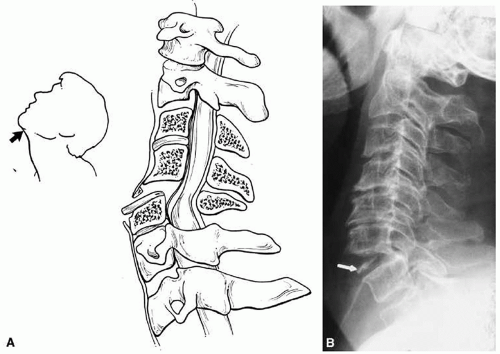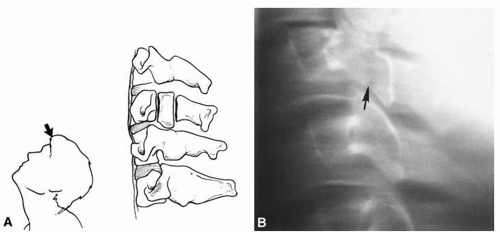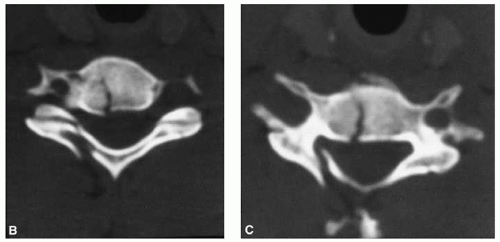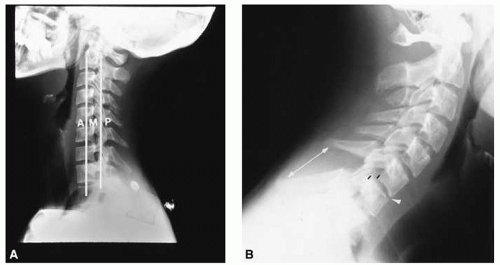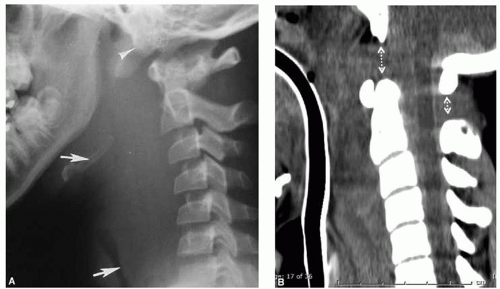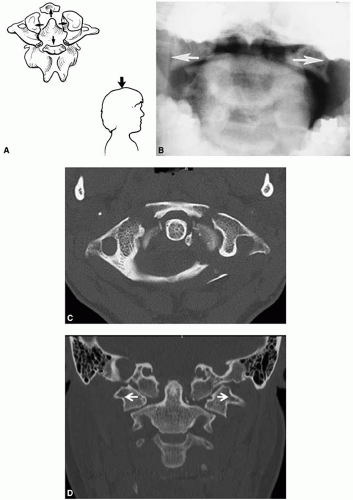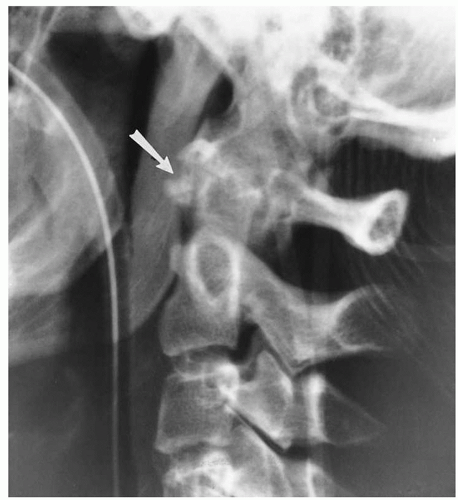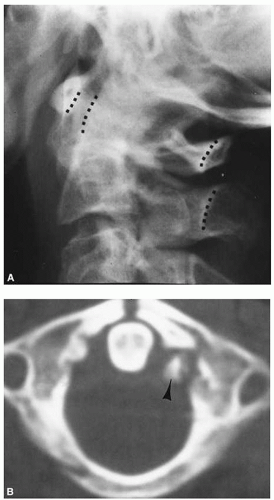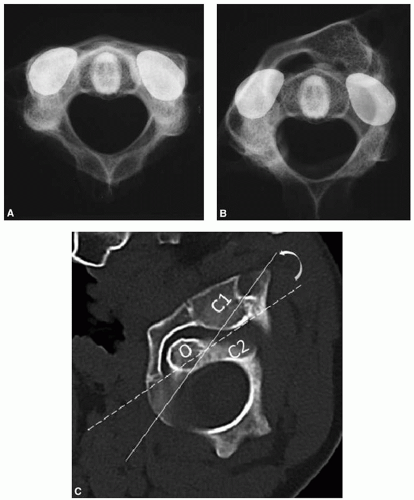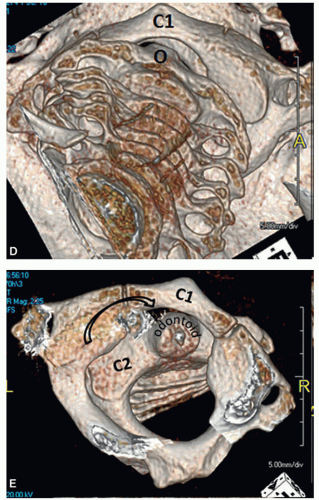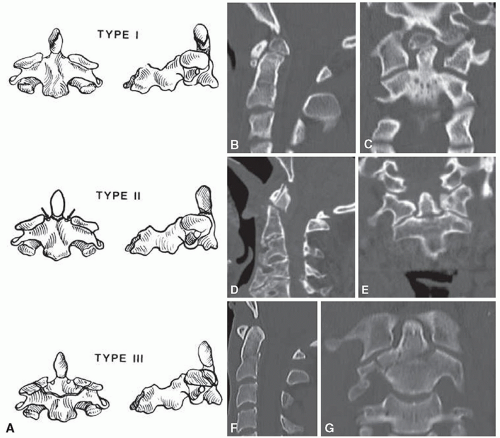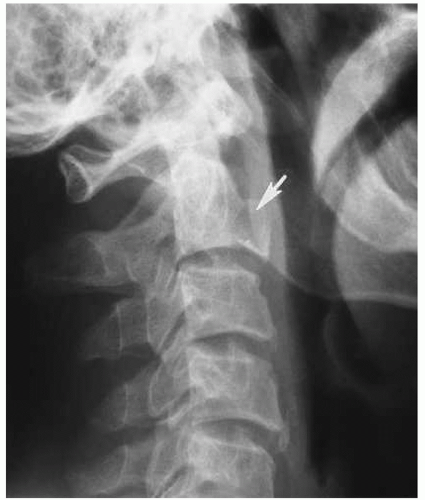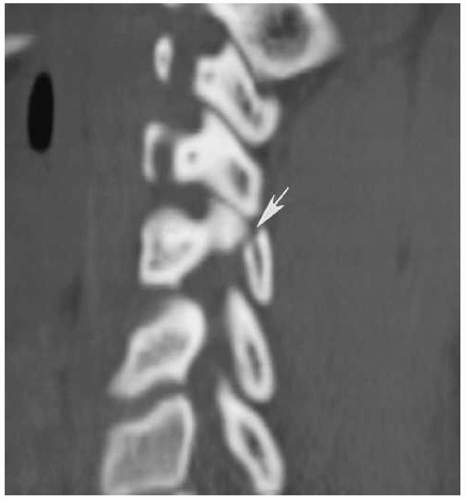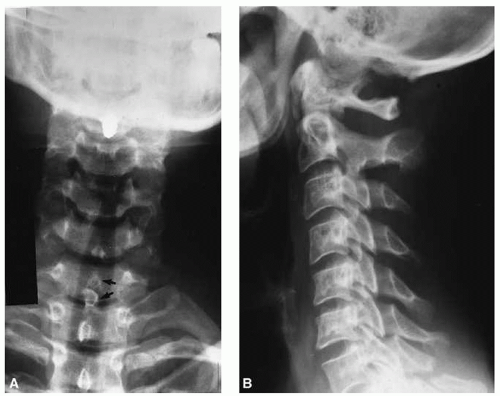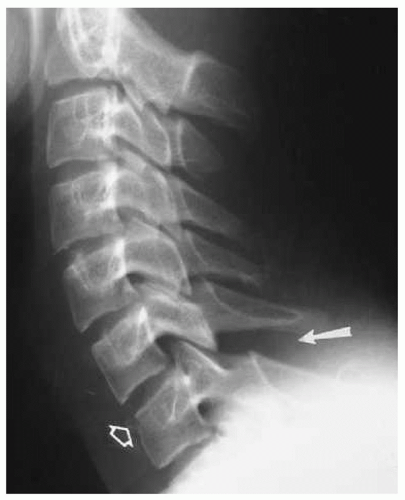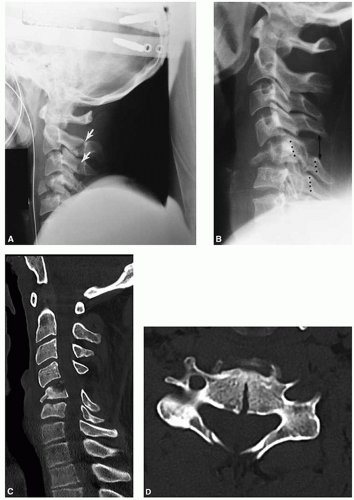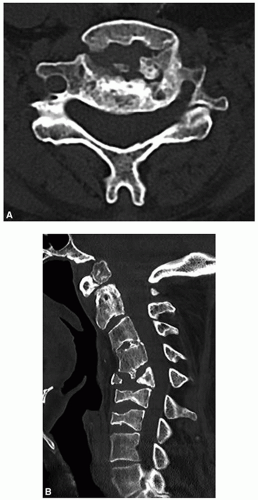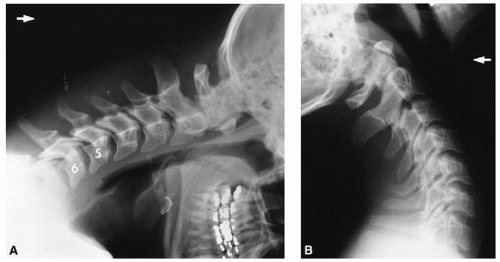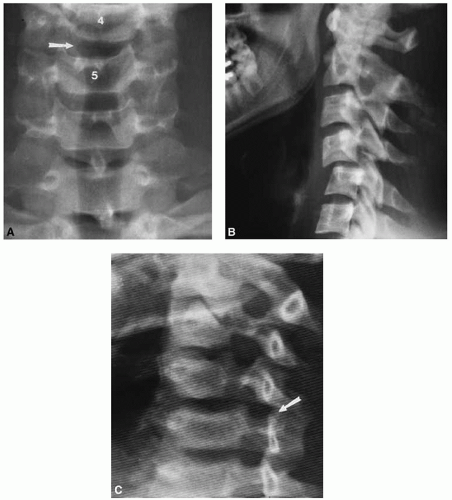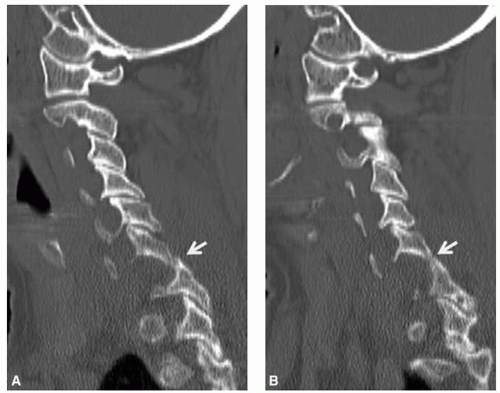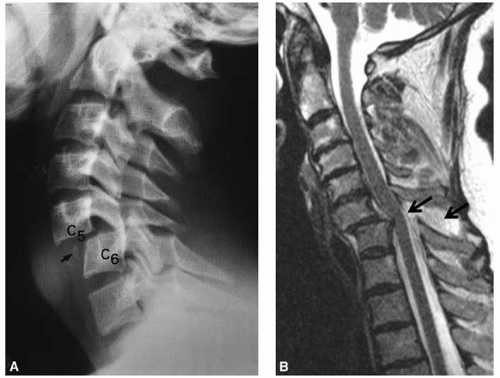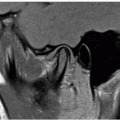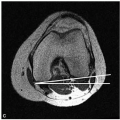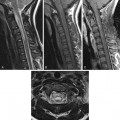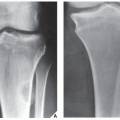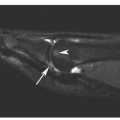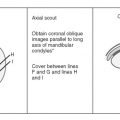Traumatic injuries to the cervical spine comprise approximately 65% of all spinal injuries.
The incidence of cervical spine injury (CSI) after blunt trauma is 2% to 6%.
Cervical spine immobilization is an important initial step in preventing neurologic injury after trauma. The immobilization may be “cleared” by a combination of physical examination findings and radiographic studies.
Computed tomography (CT) has approximately 100% sensitivity for detection of fractures compared with 65% for radiographs, and therefore should be the first imaging modality in patients with suspected injury (Level I evidence).
NEXUS (National Emergency X-Radiography Utilization Study) criteria and CCR (Canadian C-Spine Rule) are validated clinical decision tools to safely rule out CSI without the need to obtain radiographs in alert and stable trauma patients. Both have sensitivity of 90% to 100% for ruling out CSI (Table 2-1).
ACR Appropriateness Criteria rating if imaging indicated by NEXUS criteria:
CT cervical spine without intravenous (IV) contrast—9
Radiographs—6
Magnetic resonance imaging (MRI) without IV contrast for myelopathy—9, and treatment planning for unstable spine—8
Computed tomography angiography head and neck if clinical or imaging findings suggest arterial injury—9
Understanding the mechanism of injury is helpful for evaluating images and determining prognosis (Table 2-2).
Stability of injuries is important to assess. This can be usually accomplished on the lateral view or reformatted CT images, although all images should be assessed.
Indicators of instability include
More than one column involved (Fig. 2-7)
Subluxation greater than 3 mm
Increased interspinous distance
Facet joint widening
Narrowed disc or widened space
Vertebral compression greater than 25%
Not all radiographically documented cervical spine injuries are clinically significant (Table 2-3)
Table 2-1 | ||
|---|---|---|
|
Table 2-2 CERVICAL SPINE TRAUMA: MECHANISMS OF INJURY | ||||||||||||||||||||||||||||
|---|---|---|---|---|---|---|---|---|---|---|---|---|---|---|---|---|---|---|---|---|---|---|---|---|---|---|---|---|
|
Table 2-3 | ||
|---|---|---|
|
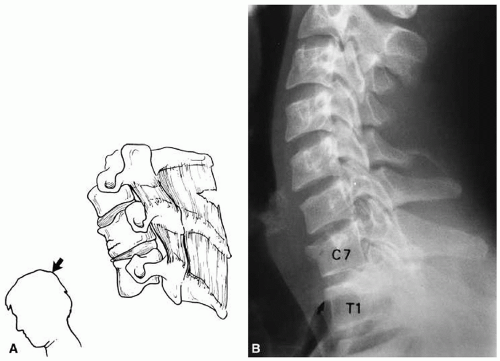 FIGURE 2-2. Compressive hyperflexion injuries. (A) Mechanism of injury with force transmitted to the anterior vertebral body. (B) Lateral radiograph demonstrates compression of C7 and T1 (arrow). |
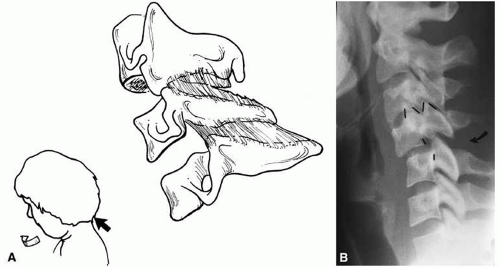 FIGURE 2-5. Flexion-rotation injuries. (A) Mechanism of injury. (B) Lateral radiograph shows a unilateral locked facet with subluxation and “bow-tie” configuration (lines) of the facets. |
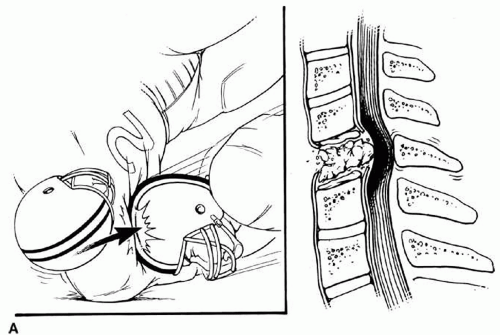 FIGURE 2-6. Vertical compression injuries. (A) Mechanism of injury. (B, C) Axial computed tomography (CT) images of a burst fracture. |
Atlanto-occipital dislocations are usually fatal; therefore, imaging is rarely performed.
The injury results from high-velocity shearing forces dislocating the head from C1.
In children, the condyles are less well developed, making patients more susceptible to injury.
Occur due to widespread ligamentous disruption between the occiput and upper cervical spine. Often without bony fractures and hence more ready missed by an inexperienced observer.
If the patient survives the injury, treatment is occipital-C2 fusion.
Fractures of the atlas (C1) account for 25% of craniocervical injuries, 3% to 13% of cervical spine injuries, and 1% to 3% of all spinal injuries.
Biomechanism: Distraction of C1 lateral masses and failure of the C1 ring at its weakest points adjacent to the lateral masses due to axial loading of occiput.
Isolated posterior arch followed by anterior arch fractures are most common and are managed conservatively with excellent union rates.
Isolated burst fractures (including classic Jefferson fracture) are second most common and seldom cause neurologic injury because the anatomy and mechanism of injury force the fragments away from the spinal canal.
Injuries to transverse ligament are common and can occur without bony injury. Unless the occipital condyles are fractured, other ligaments are spared.
Modified Jefferson Classification:
Type I: Posterior arch alone, most common (67%), bilateral, nondisplaced, and stable
Type II: Anterior arch
Type III: Bilateral posterior arch with unilateral or bilateral anterior arch; includes classic Jefferson burst fracture defined by bilateral fractures of both anterior and posterior arches; usually high-velocity loading mechanism
Type IV: Lateral mass; usually medial portion of lateral mass and unilateral; low-velocity loading mechanism
Type V: Transverse fractures of anterior arch, usually horizontal and in elderly
Forty percent to forty-four percent atlas fractures can occur in combination with axis (C2) or subaxial cervical spine fractures. C2 fractures are usually Type II odontoid or isthmus (hangman’s fractures).
Treatment depends upon integrity of the transverse ligament and the presence or absence of other cervical spine injuries.
Isolated atlas fractures with intact transverse ligament or associated with avulsion of bony medial tubercle have a good union rate with external immobilization (hard collar vs. halo).
Isolated atlas fractures with disruption of mid-portion or nonbony avulsion from medial tubercle cannot heal and are treated with surgical fixation.
Imaging:
Radiographs include open-mouth odontoid, lateral, and flexion-extension views. CT preferred for complete evaluation. MRI highly sensitive for evaluation of transverse ligament rupture.
Displacement of C1 lateral mass over C2 facets suggests burst fracture of atlas.
C1 lateral mass overhang upon C2 facets combined on both sides >7 mm (rule of Spence) is suggestive of ruptured transverse ligament. However, rule of Spence can miss transverse ligament disruption from avulsion of medial tubercle.
The amount of C1 lateral mass overhang is important for surgical planning and fixation approach (transarticular vs. lateral mass).
Atlantodental interspace >3 mm in adults and >5 mm in children highly suggestive of ruptured transverse ligament.
Retropharyngeal soft tissue swelling at C1-C3 suggestive of anterior arch fracture.
Traumatic dislocations of the atlantoaxial axis are rare.
The transverse ligament assists in maintaining the normal C1-C2 relationship. Subluxations may occur with conditions that affect the normal osseous or ligamentous integrity (rheumatoid arthritis, retropharyngeal infection, congenital abnormalities, and trauma).
Traumatic subluxation/dislocation may be anterior, posterior, or rotary in nature.
Normally, the space between the odontoid and lower anterior arch of C1 is 2 mm in adults and 4 mm in children.
Imaging can be accomplished with lateral and open-mouth odontoid views. However, thin-section CT with reformatting or three-dimensional reconstruction is most accurate for detection and classification.
Fractures of C2 are common, accounting for 15% to 27% of cervical spine injuries (Table 2-4). Up to 25% have associated lower cervical fractures. Odontoid fractures account for 75% of cervical spine injuries in children.
Ossification of the dens completes by 12 years of age; this must be considered in pediatric trauma cases.
Fractures of the odontoid and neural arch (hangman’s fracture) account for 80% of C2 fractures.
Odontoid fractures are classified by location (Table 2-5). Fractures of the base of the odontoid (Type II) have a high incidence of nonunion (54% to 67%) and instability.
Hangman’s fractures (neural arch) are hyperextension injuries.
Posterior C1-C2 fixation methods have a high fusion rate.
Anterior odontoid screw placement is contraindicated in cases of chronic fracture, disruption of transverse ligament, or angulated displacement of dens.
Table 2-4 AXIS (C2) FRACTURES | ||||||||||
|---|---|---|---|---|---|---|---|---|---|---|
|
Table 2-5 ODONTOID FRACTURE CLASSIFICATION | ||||||||||||
|---|---|---|---|---|---|---|---|---|---|---|---|---|
|
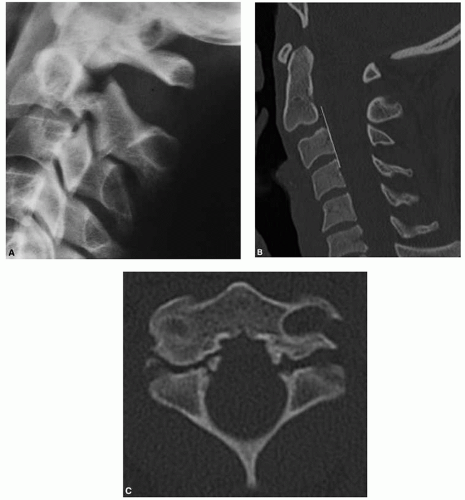 FIGURE 2-14. Hangman’s fracture with anterior displacement of C2 on C3 on lateral radiograph (A) and sagittal computed tomography (CT) image (B). Fracture of bilateral C2 pars on axial CT (C). |
Vertebral arch fractures are most frequently the result of hyperextension or lateral flexion injuries. Common sites and incidences in our experience are as follows:
Lamina
28%
Pedicle
25%
Spinous process
22%
Pillar
16%
Facets
9%
Transverse process
2%
Laminar fractures are commonly associated with spinous process fractures. The majority occur from C5-C7.
Pedicle fractures may occur at C2 (hangman’s) or in the lower cervical spine. If nondisplaced, they may be easily overlooked on routine radiographs.
Spinous process fractures are most common from C5-T1. Injury may be the result of direct trauma, hyperextension, or hyperflexion.
Pillar fractures without displacement may be overlooked on radiographs. They are most common at C6.
Facet fractures are the result of flexion-rotation or hyperflexion injuries.
Transverse process fractures occur with direct trauma or lateral flexion, and are managed conservatively.
In general, isolated nondisplaced posterior element fractures have a high spontaneous union rate and are managed conservatively with bracing unless there is neurologic compromise.
Displaced fractures of the facet or pedicle are treated with surgical fixation; however, conservative treatment may be attempted.
Transverse process fractures are stable; however, it is important to assess for potential vertebral artery injury secondary to transverse foramen compromise (40% incidence).
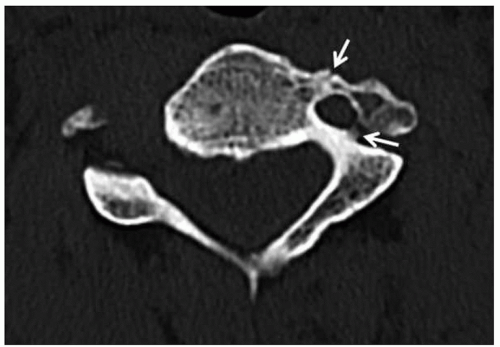 FIGURE 2-16. Computed tomography (CT) image of a remote fracture of the left transverse process through the foramen transversarium (arrows). |
More than 31% of cervical spine injuries involve the vertebral body. Seventy-five percent of fractures occur from C5-C7.
Flexion teardop fractures (avulsion injuries of inferior vertebral body) may have a benign appearance on plain radiographs; however, they have a high rate of spinal cord injury and are unstable injuries.
Burst fractures usually occur in the lower cervical spine and have a high incidence of neurologic injury; however, they may be managed conservatively with bracing if there is no ligamentous disruption.
Ligamentous disruption can be hidden by spontaneous reduction in plain radiographs taken in the supine position.
Table 2-6 summarizes vertebral body fractures.
Table 2-6 VERTEBRAL BODY FRACTURES | |||||||||||||||||||||||
|---|---|---|---|---|---|---|---|---|---|---|---|---|---|---|---|---|---|---|---|---|---|---|---|
| |||||||||||||||||||||||
Most significant ligament injuries involve the posterior column. Seventy-three percent occur at the C5-C7 levels. Anterior ligament injuries are most common at C2-C4 and C6-C7. Ligament injuries may occur alone or with fractures.
The spectrum of injuries may be subtle, without obvious abnormality and normal bony alignment, or injuries may be grossly obvious, such as bilateral locked facets.
Unilateral facet locking or perching may present with subtle radiographic findings. This flexion-rotation injury accounts for 12% of cervical injuries. Reformatted CT imaging is often required for detection and complete evaluation of these injuries.
Flexion-distraction injuries may present with acute spinal cord injury, radiculopathy, or both.
Magnetic resonance (MR) should be performed in stable patients who have suspected ligamentous injury and inconclusive findings on CT.
Ligamentous injury (anterior longitudinal ligament [ALL] and posterior longitudinal ligament [PLL]) is an unstable injury, and open reduction/internal fixation is indicated.
Because of differences in range of motion, transition in the facet joints, and other anatomic factors, the thoracolumbar junction is most susceptible to injury (66% of injuries occur between T12 and L2).
Mechanism of injury
Hyperflexion (most common)
Flexion-compression
Flexion-distraction
Flexion-rotation
Lateral flexion
Vertical compression
Hyperextension
Shearing/rotation forces
Complete evaluation of bone and soft tissue structures is essential to assess stability.
Thoracolumbar spine injuries are classified on the basis of radiographic and CT features.
Instability: Three-column approach of Denis is most useful. If two columns (Fig. 2-26) are involved, the injury is unstable.
Image evaluation: Routine radiographs remain the primary screening tool for thoracolumbar fractures. However, CT is almost 100% sensitive for fracture detection compared with 32% for radiographs. CT is also useful to fully evaluate fragment position and spinal canal compromise. MRI is useful in selected cases to evaluate the cord, nerve roots, and soft tissue injuries. Unsuspected posterior ligament injuries are evident on MRI, when not seen on radiographs or CT.
Stay updated, free articles. Join our Telegram channel

Full access? Get Clinical Tree


